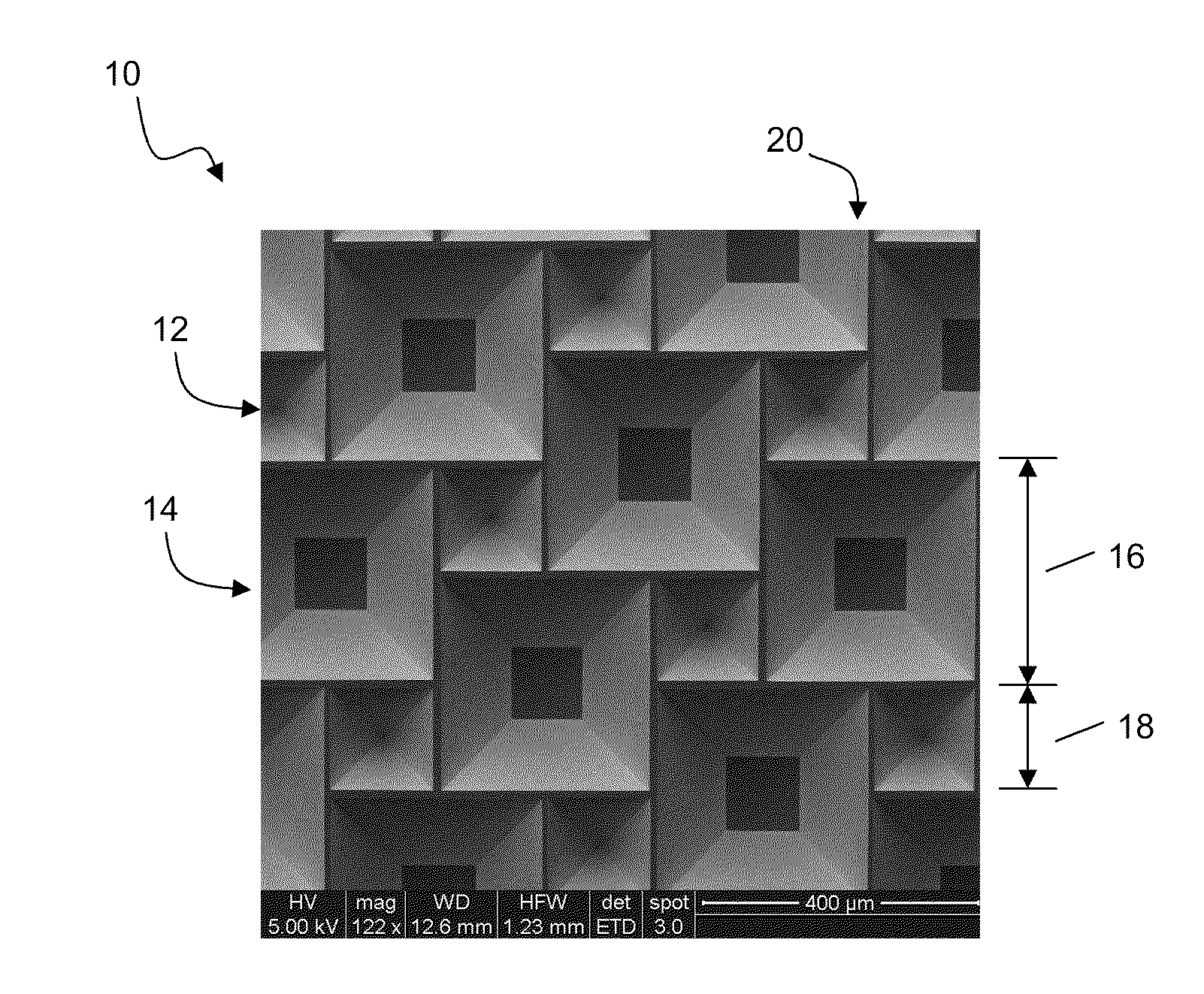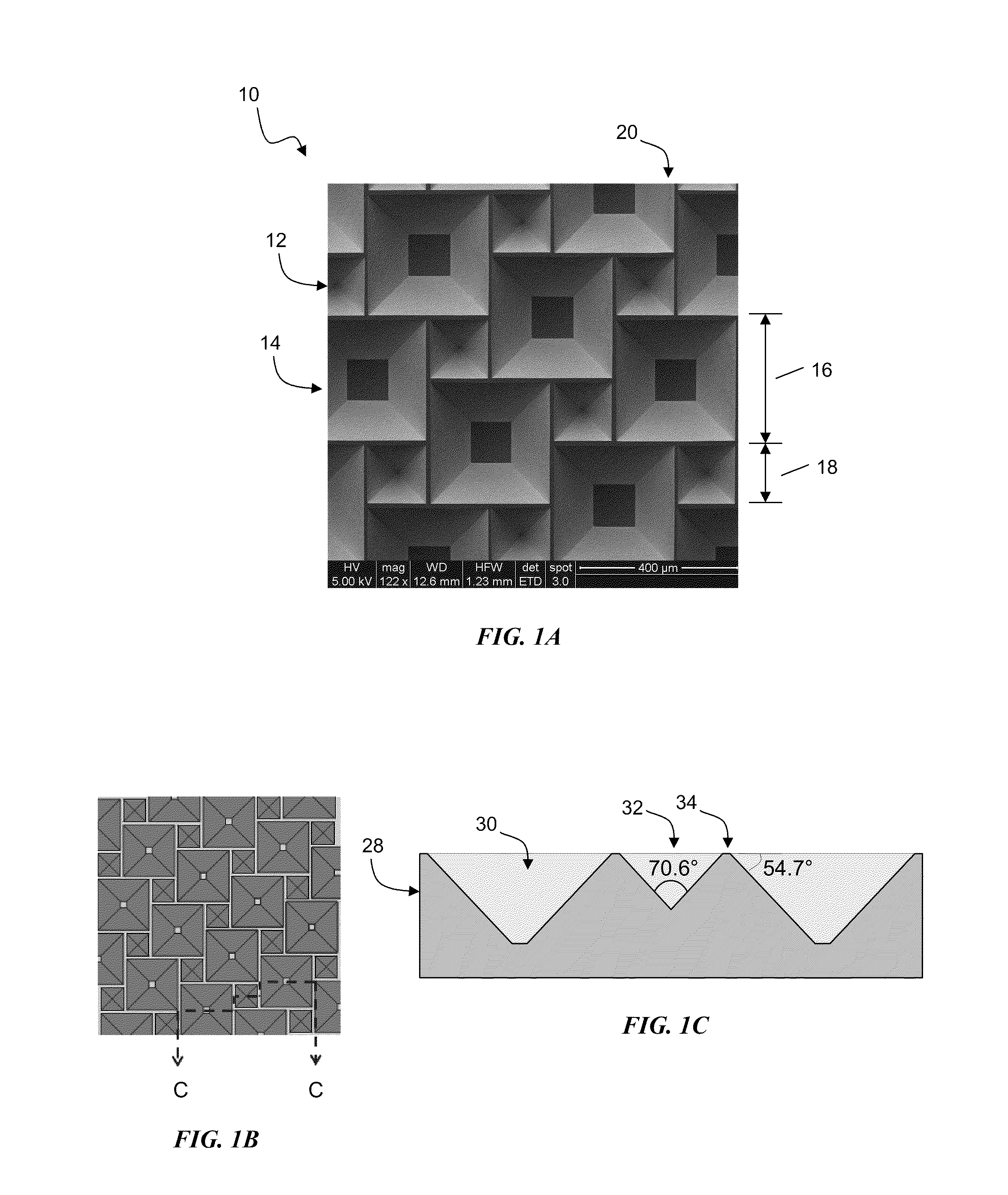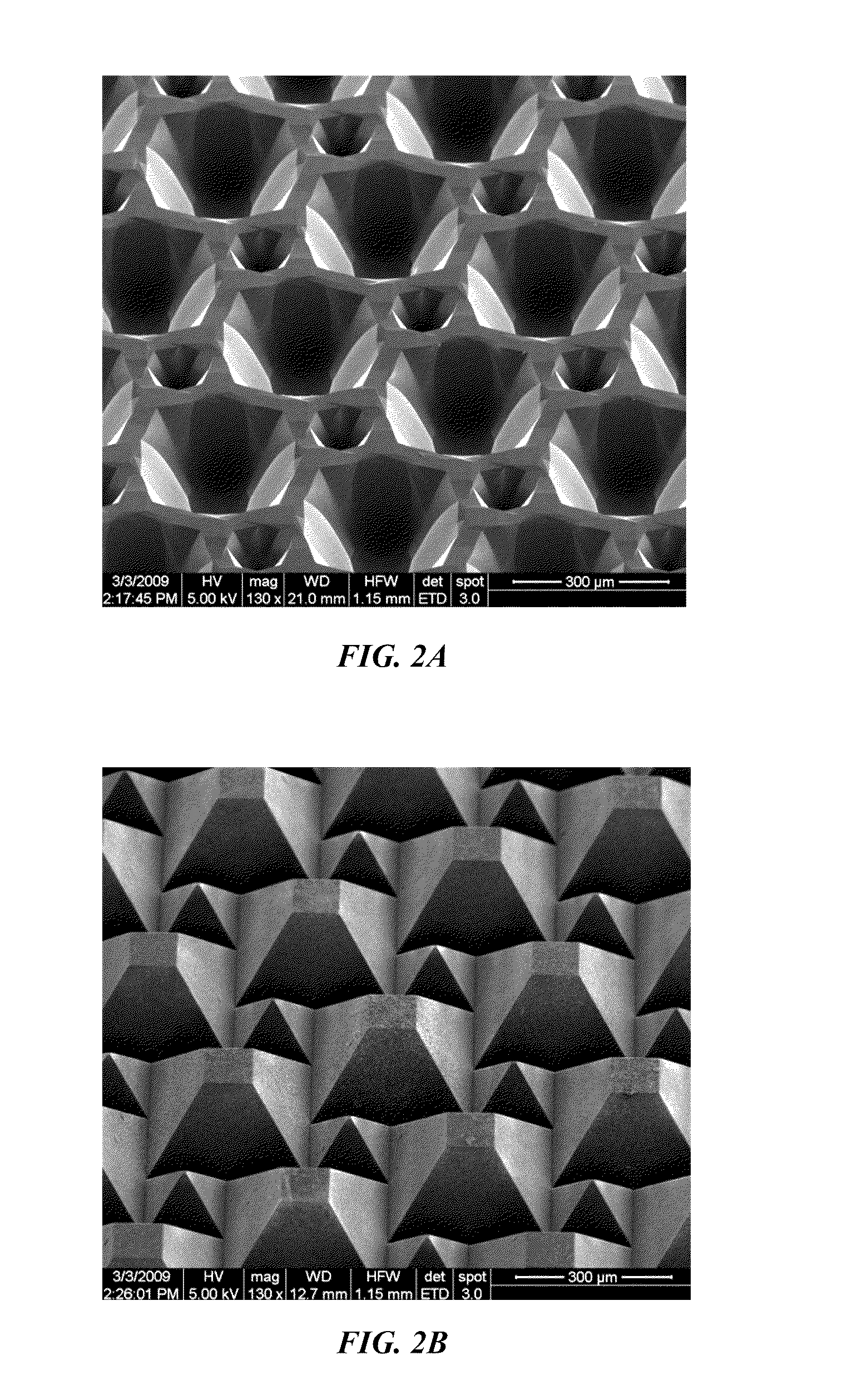Three-dimensional thin-film semiconductor substrate with through-holes and methods of manufacturing
a technology of semiconductor substrates and throughholes, applied in the field of photovoltaics and solar cells, can solve the problems of low efficiency of bipv modules standard crystalline semiconductors, and achieve the effect of reducing disadvantages and problems
- Summary
- Abstract
- Description
- Claims
- Application Information
AI Technical Summary
Benefits of technology
Problems solved by technology
Method used
Image
Examples
Embodiment Construction
[0052]The following description is not to be taken in a limiting sense, but is made for the purpose of describing the general principles of the present disclosure. The scope of the present disclosure should be determined with reference to the claims. Exemplary embodiments of the present disclosure are illustrated in the drawings, like numbers being used to refer to like and corresponding parts of the various drawings.
[0053]Although described with reference to specific embodiments, one skilled in the art could apply the principles discussed herein to other areas and / or embodiments. A preferred semiconductor material for the 3-D TFSS is crystalline silicon (c-Si), although other semiconductor materials may also be used. One embodiment uses monocrystalline silicon as the thin film semiconductor material. Other embodiments use multicrystalline silicon, polycrystalline silicon, microcrystalline silicon, amorphous silicon, porous silicon, and / or a combination thereof. The designs here are...
PUM
 Login to View More
Login to View More Abstract
Description
Claims
Application Information
 Login to View More
Login to View More - R&D
- Intellectual Property
- Life Sciences
- Materials
- Tech Scout
- Unparalleled Data Quality
- Higher Quality Content
- 60% Fewer Hallucinations
Browse by: Latest US Patents, China's latest patents, Technical Efficacy Thesaurus, Application Domain, Technology Topic, Popular Technical Reports.
© 2025 PatSnap. All rights reserved.Legal|Privacy policy|Modern Slavery Act Transparency Statement|Sitemap|About US| Contact US: help@patsnap.com



